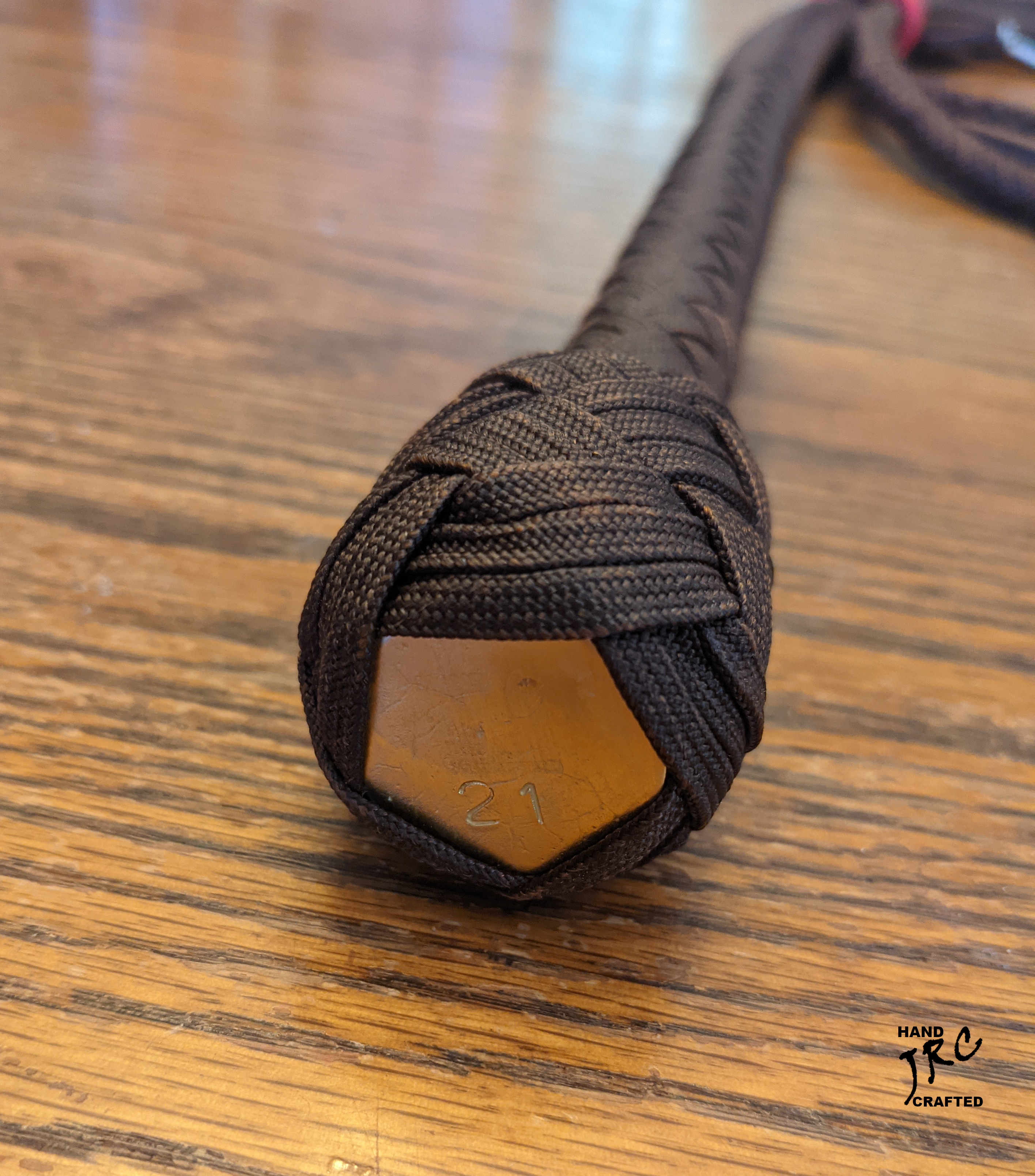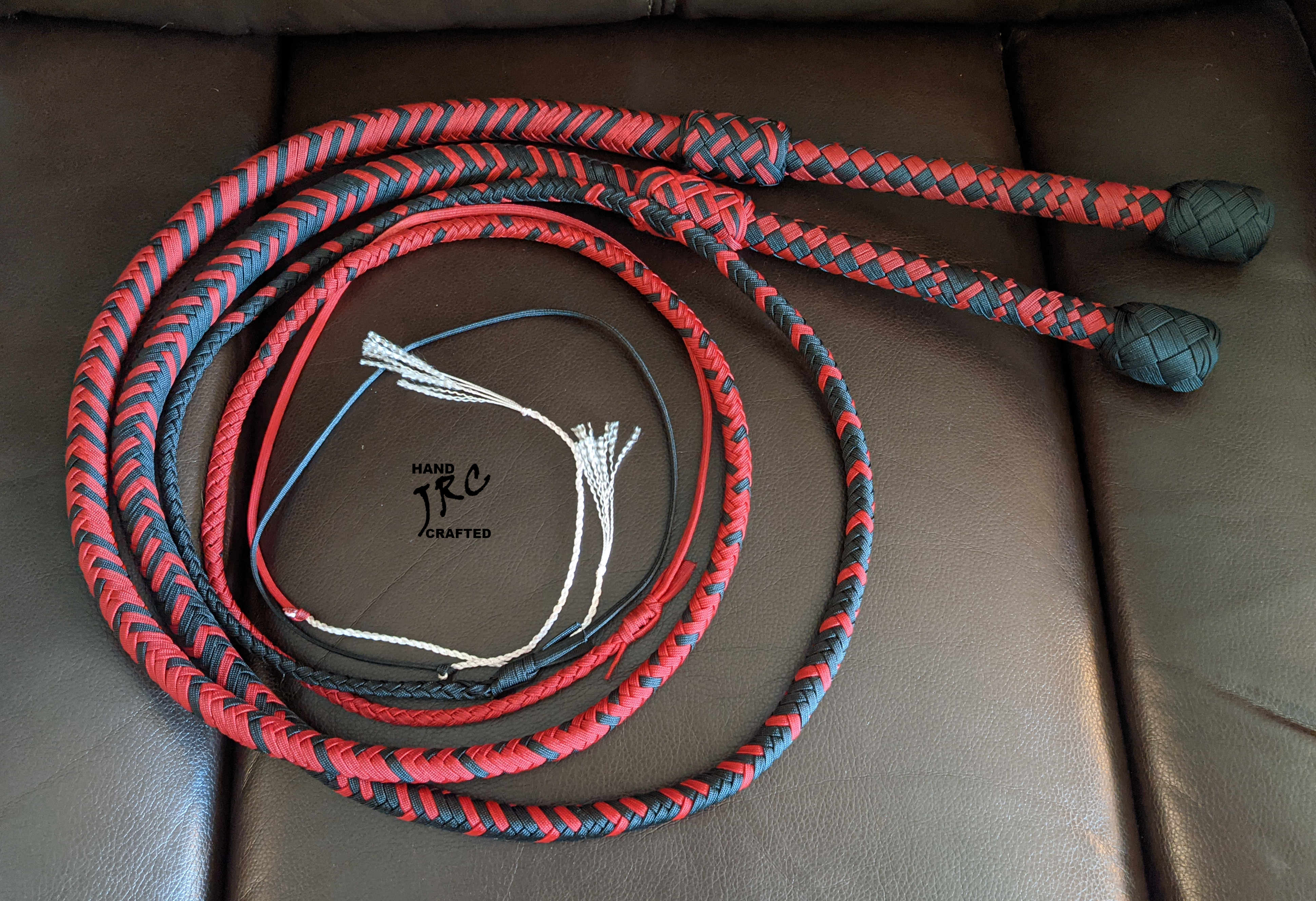
Welcome to JRC Handcrafted Whips
Your top choice for affordable nylon whips for sport whip cracking, cosplay, and ranch work. I got introduced to whip cracking by my Kali instructor (Filipino martial arts). That first day I struggled to get a good crack out of his whip, but I also became fascinated by it too! Sending a piece of string traveling over 760 MPH with a casual swing of your arm was exhilarating, and I decided that this was a skill I wanted to learn!
I got introduced to whip cracking by my Kali instructor (Filipino martial arts). That first day I struggled to get a good crack out of his whip, but I also became fascinated by it too! Sending a piece of string traveling over 760 MPH with a casual swing of your arm was exhilarating, and I decided that this was a skill I wanted to learn!
My desire to learn how to crack a whip, led me into making them.
I made my first whip. It cracked quite well, but there were some cosmetic flaws that I thought I could do better on. So I made another, and another, and another... Eventually I realized that I needed to make room for new whips so I made a feeble attempt to sell four of my early whips… they were gone in two days, and I had two orders for custom builds as well!
Since then I've continued cracking, making, and selling whips.

Why Paracord?
I only use paracord for making whips. Although kangaroo leather is considered the “gold standard” for whip material, paracord whips have become very popular over the last few decades as people have become aware of the quality that can be achieved with this economical substitute. Paracord has several advantages over kangaroo hide too.- It's easily available in a multitude of colors and designs.
- It's a significantly cheaper material.
- The strands require no preparation. When making a leather whip, the strands have to be cut, beveled, split, and stretched, all by hand.
- A paracord whip can be used in any weather and put away wet. A leather whip requires much more care and maintenance, and is rarely used in poor weather.
- Making leather whips is a messy job.
- It's vegan :)